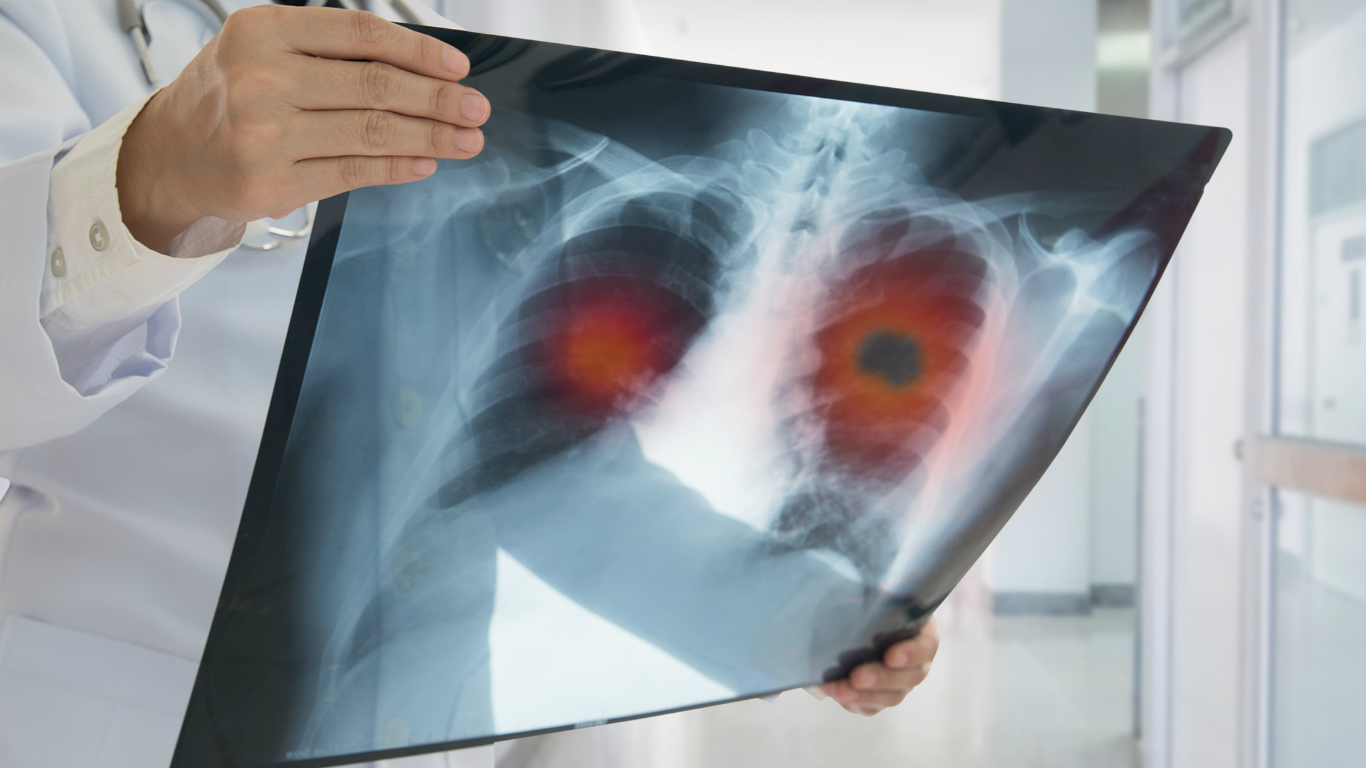There will be nearly 1.8 million new cancer diagnoses and 606,900 cancer deaths in the United States in 2019, according to the American Cancer Society. Though the exact causes of cancer are not fully understood, there are risk factors that can increase the risk of certain types of cancer, including age, genetic predisposition, and gender, as well as smoking, obesity, and unhealthy lifestyles.
Nationwide, women are slightly more likely than men to be diagnosed with cancer. Higher cancer diagnosis rates in women are partially because women can develop five different common types of cancer than men cannot, while men can only develop three different types of cancer that women cannot. Women are also far more likely to develop breast cancer than men, and breast cancer is the most common type of cancer in the United States.
While women are more likely to be diagnosed with cancer, more American men will die from cancer this year than women. This is due in part to behavioral factors. For example, lung cancer is the deadliest cancer in the United States, and 81% of lung cancer deaths are caused by smoking — and men are more likely to smoke than women.
24/7 Wall St. reviewed the ACS report “Cancer Facts & Figures 2019” to identify the most common types of cancer for men and women. We only included specific types of cancer in our analysis. The ACS used historic cancer diagnosis and death data to estimate diagnoses and deaths in 2019. The ACS used 15 years of cancer diagnosis data (2001-2015) to estimate new cases in 2019.
The good news is that cancer is becoming less deadly in the United States. There were 2.6 million fewer cancer deaths in 2016 than in 1991. The reduction is attributable to improving detection methods and treatments, but also to healthier behaviors. Still, further progress can be made. For example, because obesity and e-cigarette use can increase the risk of cancer, both rank among the biggest public health problems of the year.

20. Pharynx
> Est. new cases in 2019: 17,870
> Diagnosis by gender: 80.9% male, 19.1% female
> Est. deaths in 2019: 3,450
> Deaths by gender: 77.1% male, 22.9% female
The pharynx is located in the back of the throat and is a part of the human digestive system. The ACS estimates there will be 17,870 new diagnoses of pharynx cancer in 2019, disproportionately affecting men. Aging, tobacco use, excessive alcohol consumption, and asbestos exposure are all risk factors for pharynx cancer.
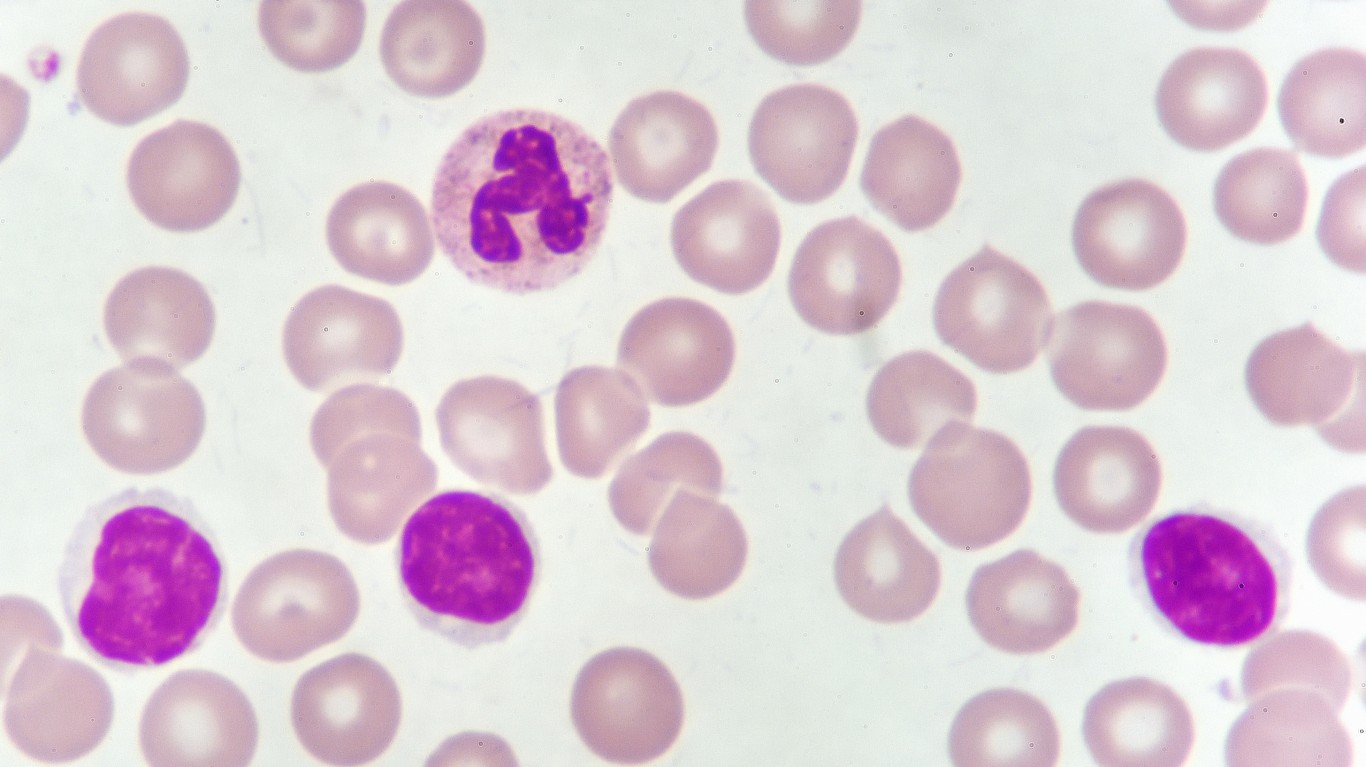
19. Chronic lymphocytic leukemia
> Est. new cases in 2019: 20,720
> Diagnosis by gender: 62.2% male, 37.8% female
> Est. deaths in 2019: 3,930
> Deaths by gender: 56.5% male, 43.5% female
Leukemia is a certain kind of cancer than begins in blood-producing cells of the bone marrow and eventually spreads to other parts of the body. Though acute myeloid leukemia is slightly more common overall, chronic lymphocytic leukemia is the most common form of leukemia in adults. Chronic leukemia is more difficult to treat than acute leukemia and is more commonly detected in men.
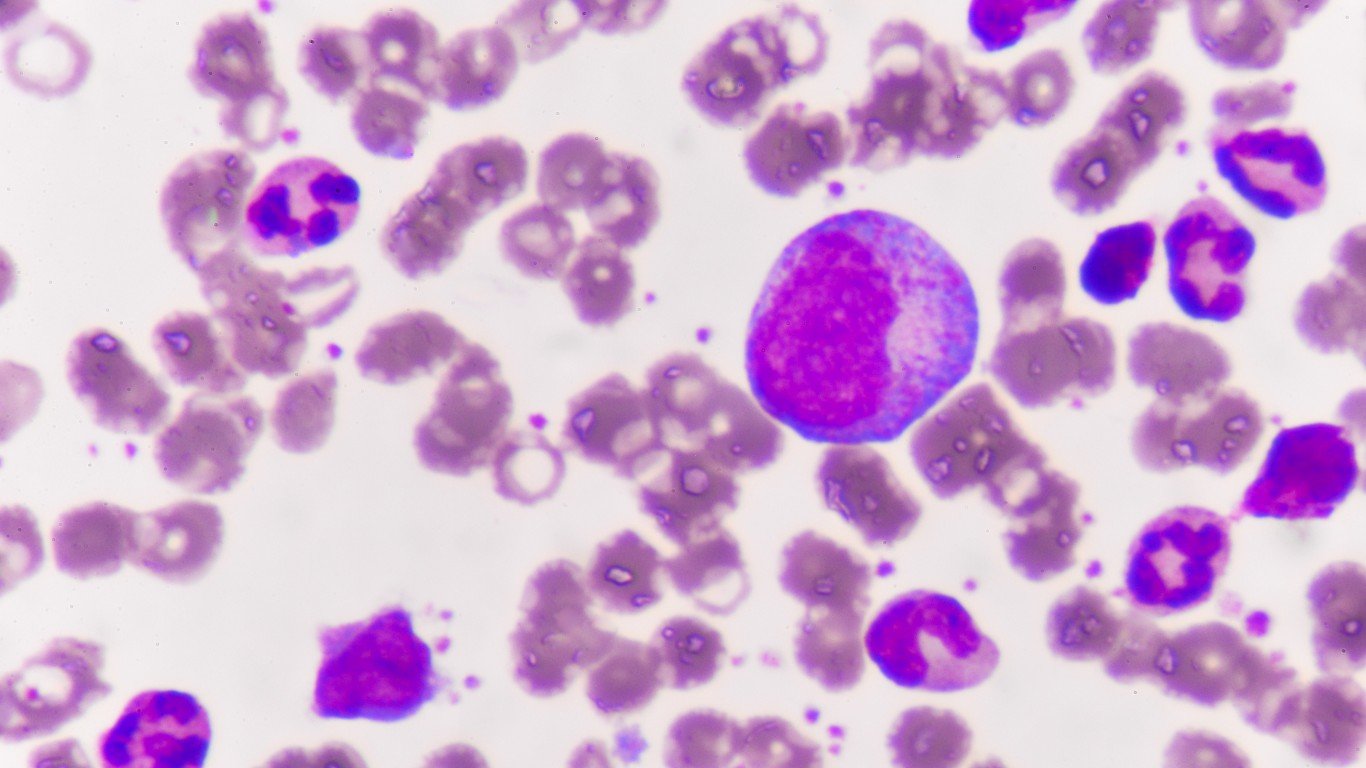
18. Acute myeloid leukemia
> Est. new cases in 2019: 21,450
> Diagnosis by gender: 54.3% male, 45.7% female
> Est. deaths in 2019: 10,920
> Deaths by gender: 57.6% male, 42.4% female
Acute myeloid leukemia, or AML, is most common in adults, though it can also occur in children. There are multiple different subtypes of AML, and each can affect the prognosys. Men are at a slightly higher risk of developing AML than women.

17. Ovary
> Est. new cases in 2019: 22,530
> Diagnosis by gender: 100% female
> Est. deaths in 2019: 13,980
> Deaths by gender: 100% female
Ovarian cancer, which originates in the ovaries, is one of only three types of cancer that only affects half of the population and is still estimated to affect over 22,000 Americans this year. Nearly 14,000 women will likely die from ovarian cancer in 2019.

16. Brain & other nervous system
> Est. new cases in 2019: 23,820
> Diagnosis by gender: 56.3% male, 43.7% female
> Est. deaths in 2019: 17,760
> Deaths by gender: 55.8% male, 44.2% female
Brain cancer is the presence of a malignant tumor or tumors in the brain or spinal cord. An estimated 23,820 Americans will be diagnosed with brain and other nervous system cancers this year, and 17,760 will likely die. Symptoms include sleepiness, confusion, and seizures.

15. Stomach
> Est. new cases in 2019: 27,510
> Diagnosis by gender: 62.6% male, 37.4% female
> Est. deaths in 2019: 11,140
> Deaths by gender: 61.0% male, 39.0% female
Stomach or gastric cancer attacks the lining of the stomach, often causing nausea, bloating, loss of appetite, and heartburn. Risk factors include family history, age, and smoking. The ACS estimates that over 27,000 Americans will be diagnosed with the disease in 2019, and most of them will be men.

14. Myeloma
> Est. new cases in 2019: 32,110
> Diagnosis by gender: 56.5% male, 43.5% female
> Est. deaths in 2019: 12,960
> Deaths by gender: 53.9% male, 46.1% female
Myeloma is a cancer of white blood cells known as plasma that fight disease. Because of the type of blood cells it affects, myeloma reduces the body’s ability to fight infection, which can result in death. This year, an estimated 32,110 Americans will be diagnosed and 12,960 will die from myeloma — and slightly more of them will be men.
[Need Manual Image]
13. Liver & intrahepatic bile duct
> Est. new cases in 2019: 42,030
> Diagnosis by gender: 70.1% male, 29.9% female
> Est. deaths in 2019: 31,780
> Deaths by gender: 68.0% male, 32.0% female
Liver and intrahepatic bile duct cancer is predicted to be the sixth deadliest cancer for men and eighth deadliest for women in 2019. Men, especially of Asian descent, are at increased risk of liver cancer. Other risk factors include obesity, tobacco use, heavy alcohol consumption, and cirrhosis of the liver.

12. Rectum
> Est. new cases in 2019: 44,180
> Diagnosis by gender: 60.7% male, 39.3% female
> Est. deaths in 2019: N/A
> Deaths by gender: N/A
The ACS estimates that there will be 44,180 new cases of rectal cancer in 2019 — most of them in men. Smoking and obesity are risk factors for the disease. Signs of rectal cancer include diarrhea, constipation, blood in stool, change in appetite, and feeling very tired. Deaths for rectal cancer are included in the death count for colon cancer because rectal cancer deaths are often misdiagnosed as colon cancer.

11. Thyroid
> Est. new cases in 2019: 52,070
> Diagnosis by gender: 27.4% male, 72.6% female
> Est. deaths in 2019: 2,170
> Deaths by gender: 47.0% male, 53.0% female
Over 72% of the 52,070 estimated new cases of thyroid cancer in 2019 will be in women. Thyroid cancer is treatable and, more often than not, curable. Warning signs include changes in voice, a lump in the throat, and difficulty swallowing. Risk factors include exposure to radiation and genetic predisposition.
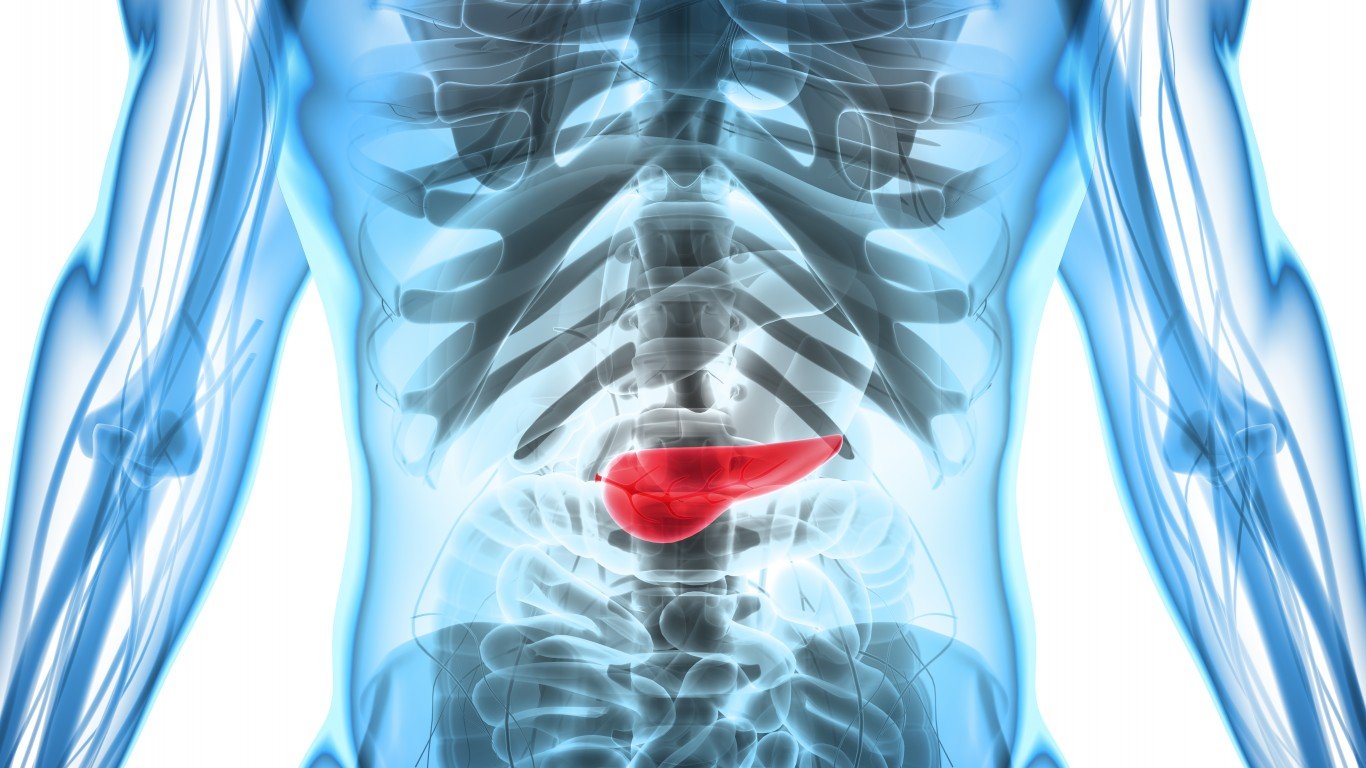
10. Pancreas
> Est. new cases in 2019: 56,770
> Diagnosis by gender: 52.7% male, 47.3% female
> Est. deaths in 2019: 45,750
> Deaths by gender: 52.0% male, 48.0% female
Pancreatic cancer is serious and often deadly. With no symptoms in early stages, pancreatic cancer is typically only caught in late stages. When symptoms eventually become apparent, they can include fatigue, jaundice, and abdomen pain. Treatments include chemotherapy and surgery.
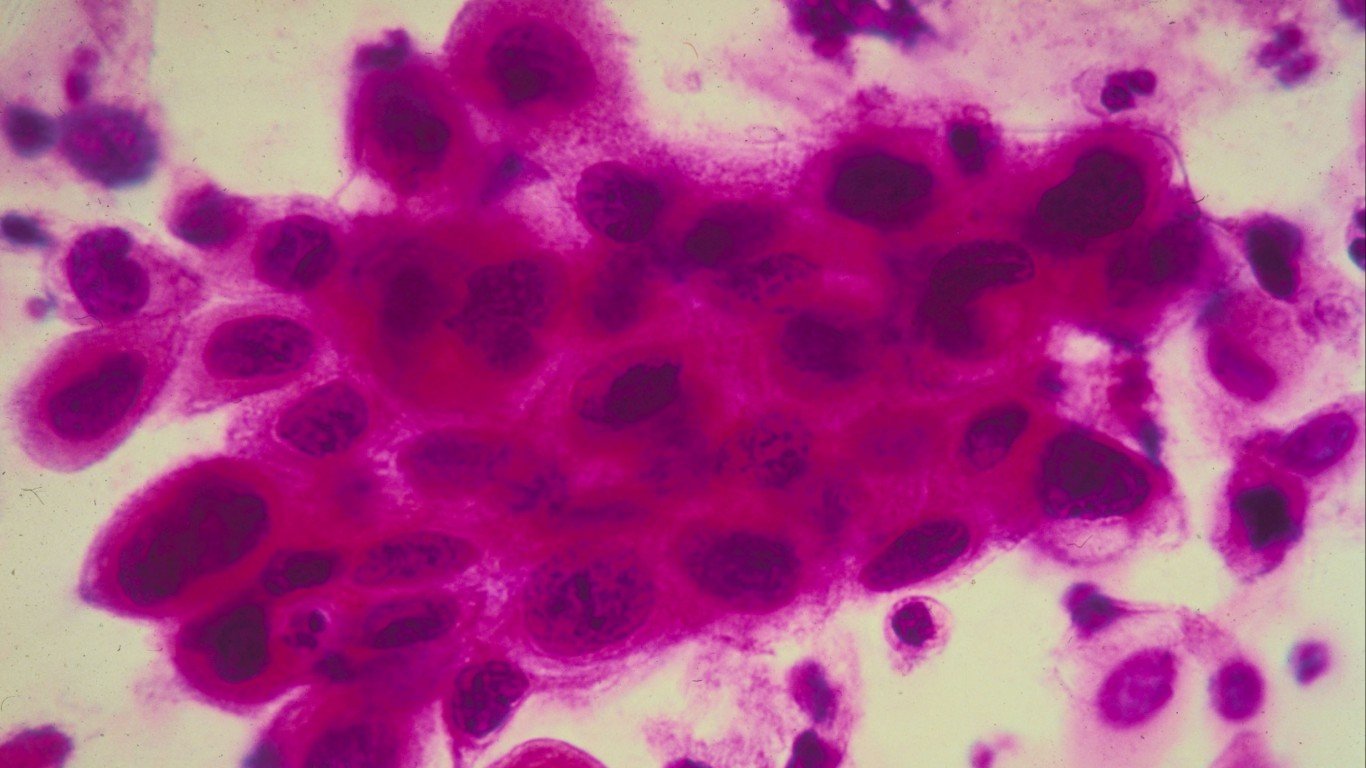
9. Uterine corpus
> Est. new cases in 2019: 61,880
> Diagnosis by gender: 100% female
> Est. deaths in 2019: 12,160
> Deaths by gender: 100% female
Though it can only affect women, uterine corpus cancer ranks among the 10 most common cancer diagnoses. This type of cancer typically occurs after menopause and is the third most common type of cancer in women. The ACS estimates that nearly 62,000 American women will be diagnosed with the disease in 2019.
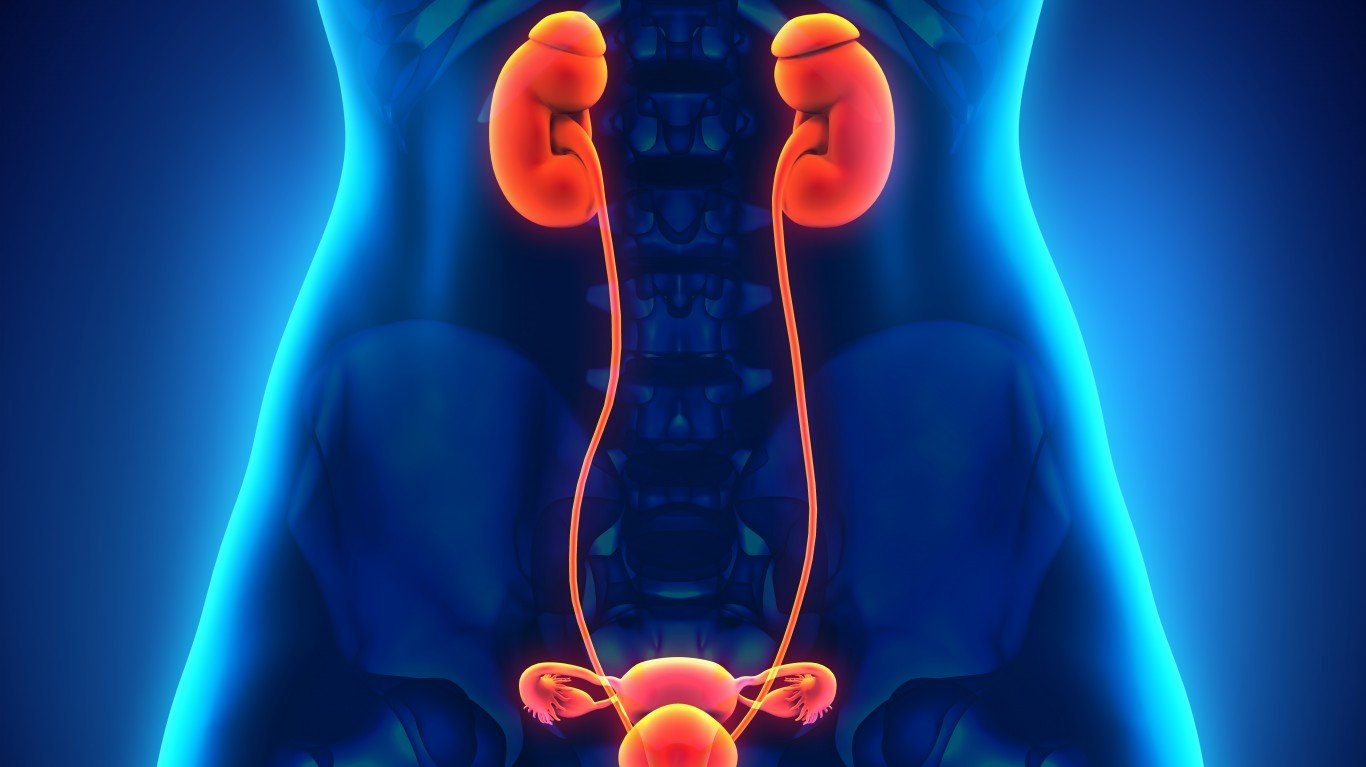
8. Kidney & renal pelvis
> Est. new cases in 2019: 73,820
> Diagnosis by gender: 59.8% male, 40.2% female
> Est. deaths in 2019: 14,770
> Deaths by gender: 66.5% male, 33.5% female
The ACS estimates that there will be 73,820 new cases of kidney and renal pelvis cancer in 2019 and 14,770 deaths due to the disease. Signs and symptoms of the condition include blood in urine, constant back pain, exhaustion, and unexplained weight loss. Prognosis for those with this type of cancer depends on the stage of the cancer, the specific location of the tumor, and the patient’s overall kidney health.

7. Non-Hodgkin lymphoma
> Est. new cases in 2019: 74,200
> Diagnosis by gender: 55.4% male, 44.6% female
> Est. deaths in 2019: 19,970
> Deaths by gender: 57.6% male, 42.4% female
Non-Hodgkin lymphoma, or NHL, starts in the body’s white blood cells and can spread to other areas. NHL can be treated with chemotherapy, radiation therapy, or stem cell transplant. Over 55% of the projected 74,200 new cases and 19,970 deaths attributable to the disease this year will be in adult men.
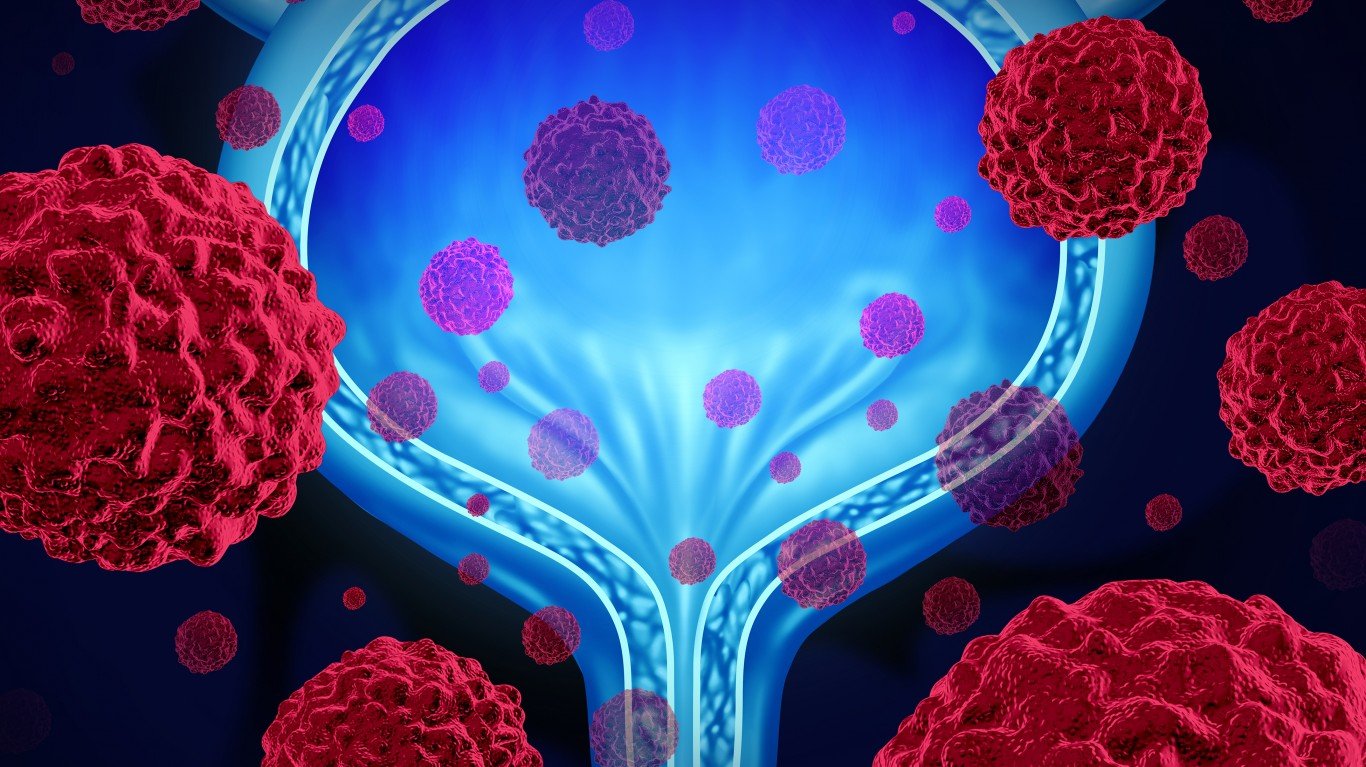
6. Urinary bladder
> Est. new cases in 2019: 80,470
> Diagnosis by gender: 76.7% male, 23.3% female
> Est. deaths in 2019: 17,670
> Deaths by gender: 72.8% male, 27.2% female
Urinary bladder cancer is typically detected early, when it is highly treatable. The disease is often recurring, however, and follow ups after treatment are important. Symptoms of the disease include blood in urine, painful urination, and back pain. More than three-quarters of the 80,470 Americans projected to be diagnosed with bladder cancer in 2019 will likely be men.

5. Melanoma of the skin
> Est. new cases in 2019: 96,480
> Diagnosis by gender: 59.3% male, 40.7% female
> Est. deaths in 2019: 7,230
> Deaths by gender: 65.6% male, 34.4% female
Melanoma of the skin, or skin cancer, is one of the most common types of cancer in the United States and is highly treatable. The cancer is more common in lighter skinned people and typically occurs on the chest and back in men and on the legs of women. Treatments can involve surgery, medication, and radiation.

4. Colon
> Est. new cases in 2019: 101,420
> Diagnosis by gender: 51.0% male, 49.0% female
> Est. deaths in 2019: 51,020
> Deaths by gender: 54.2% male, 45.8% female
Older adults should be regularly screened for colon cancer as age is a primary risk factor — though the disease can affect individuals of any age. Symptoms include abdominal pain, rectal bleeding, and unexplained weight loss. The 51,020 projected 2019 colon cancer deaths include rectal cancer deaths as rectal cancer deaths are often misdiagnosed as colon cancer.
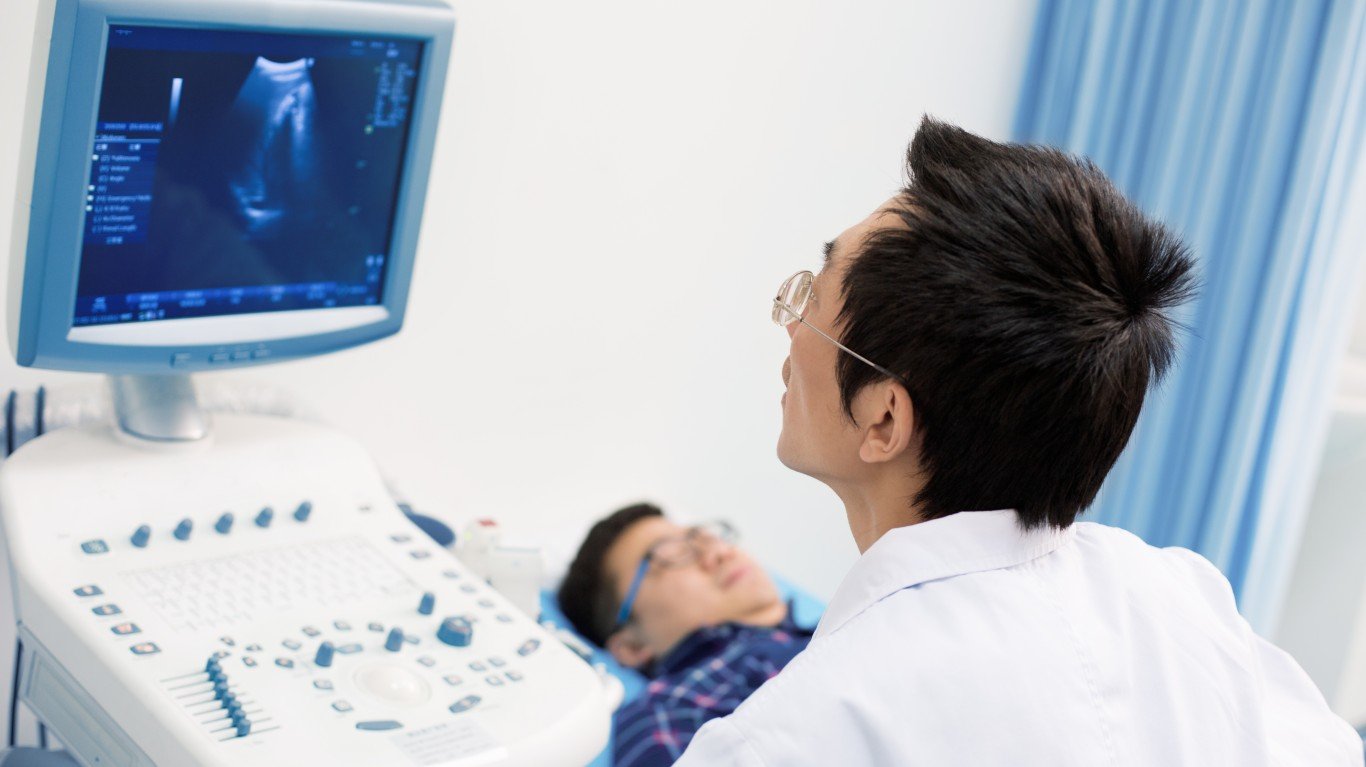
3. Prostate
> Est. new cases in 2019: 174,650
> Diagnosis by gender: 100% male
> Est. deaths in 2019: 31,620
> Deaths by gender: 100% male
Prostate cancer is the most common type of cancer in men and the second biggest killer after lung cancer. Though the exact causes of prostate cancer are not known, risk factors include age, obesity, and family history. Symptoms include trouble urinating, erectile dysfunction, and bone pain. If detected early before it spreads to other parts of the body, chances of successful treatment are far higher. The ACS estimates there will be nearly 175,000 new cases of prostate cancer in the United States in 2019 and 31,620 deaths.
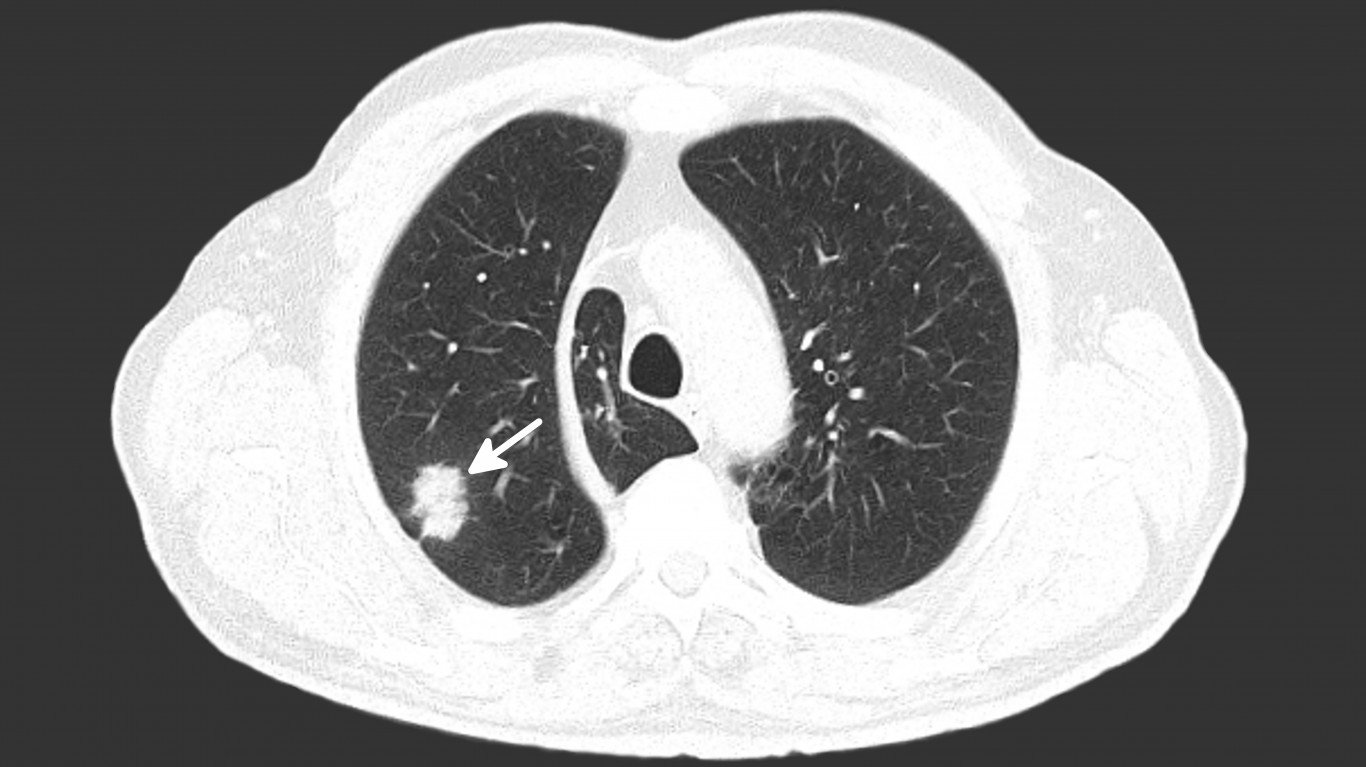
2. Lung & bronchus
> Est. new cases in 2019: 228,150
> Diagnosis by gender: 51.0% male, 49.0% female
> Est. deaths in 2019: 142,670
> Deaths by gender: 53.7% male, 46.3% female
Lung and bronchus cancer is the second most common cancer in the United States. It is the leading cause of death for both men and women. Smokers are at increased risk of lung cancer, though the disease can also affect non-smokers. There are typically no symptoms of the disease in its early stages, but later stage symptoms can include chest pain, coughing up blood, hoarseness, and shortness of breath.
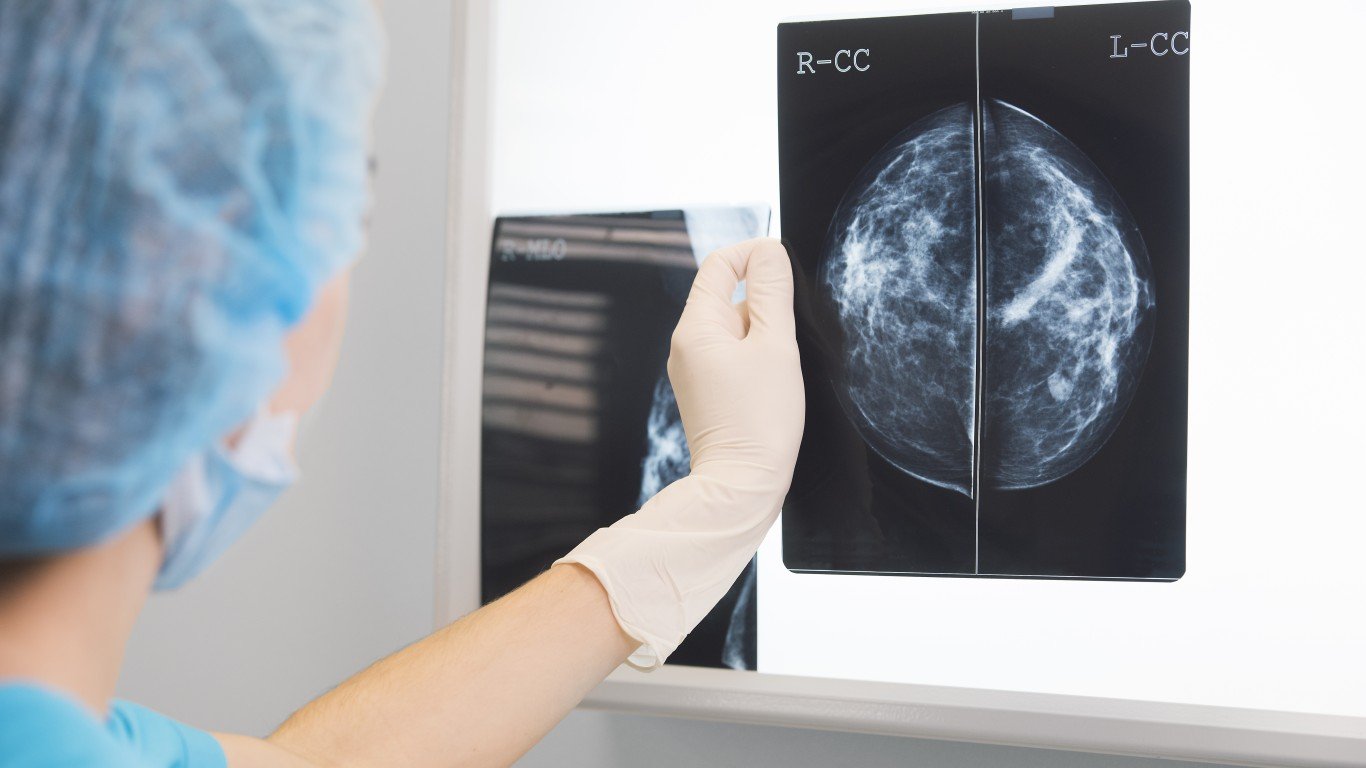
1. Breast
> Est. new cases in 2019: 271,270
> Diagnosis by gender: 1.0% male, 99.0% female
> Est. deaths in 2019: 42,260
> Deaths by gender: 1.2% male, 98.8% female
Breast cancer is the most common type of cancer and the number two killer of women in the United States after lung cancer. Though men can develop breast cancer, the vast majority of the 271,270 new cases expected in 2019 will be in women. Thanks to widespread awareness, earlier detection and advanced treatment the breast cancer death rate is declining.
